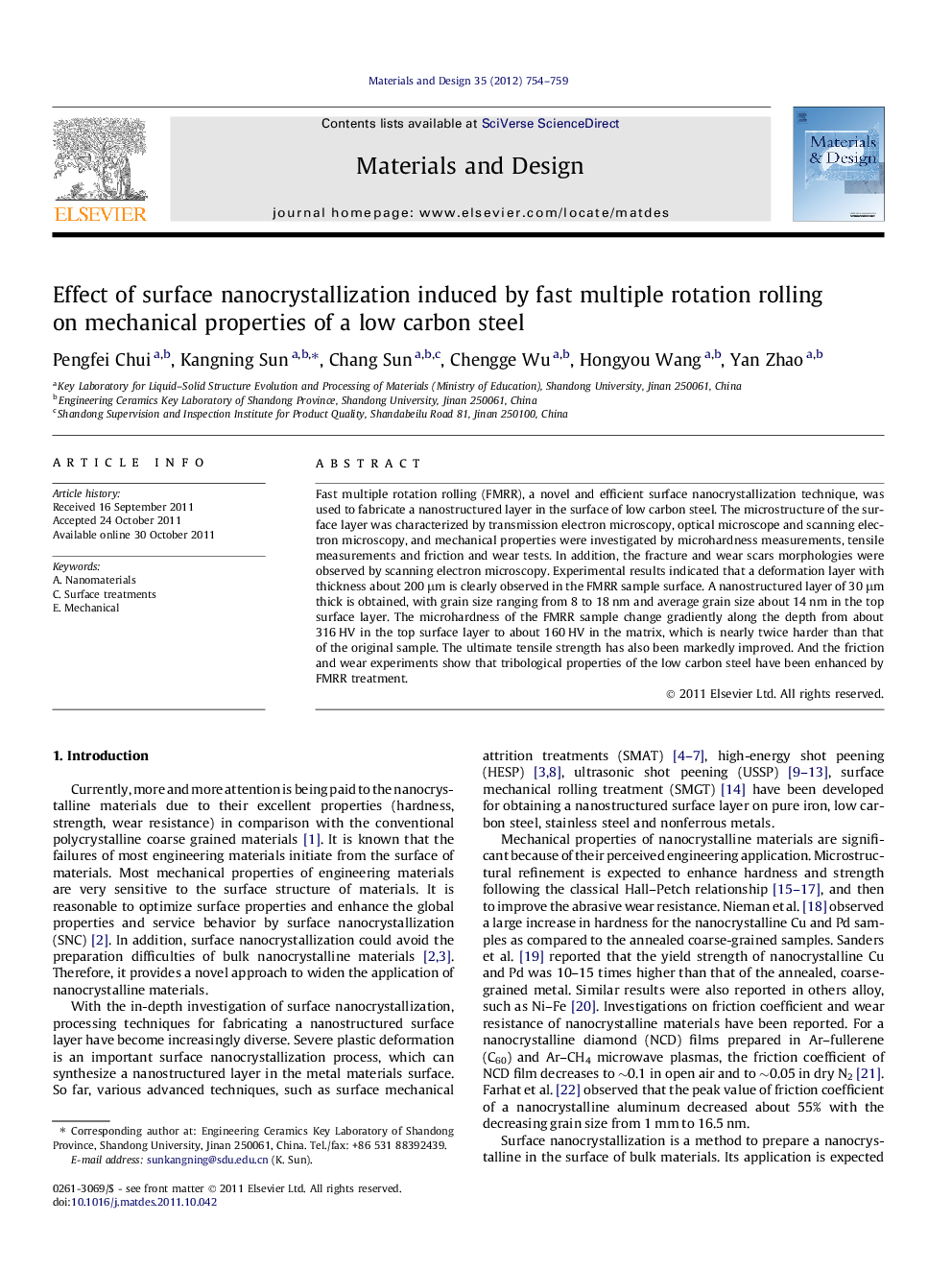| Article ID | Journal | Published Year | Pages | File Type |
|---|---|---|---|---|
| 830999 | Materials & Design (1980-2015) | 2012 | 6 Pages |
Fast multiple rotation rolling (FMRR), a novel and efficient surface nanocrystallization technique, was used to fabricate a nanostructured layer in the surface of low carbon steel. The microstructure of the surface layer was characterized by transmission electron microscopy, optical microscope and scanning electron microscopy, and mechanical properties were investigated by microhardness measurements, tensile measurements and friction and wear tests. In addition, the fracture and wear scars morphologies were observed by scanning electron microscopy. Experimental results indicated that a deformation layer with thickness about 200 μm is clearly observed in the FMRR sample surface. A nanostructured layer of 30 μm thick is obtained, with grain size ranging from 8 to 18 nm and average grain size about 14 nm in the top surface layer. The microhardness of the FMRR sample change gradiently along the depth from about 316 HV in the top surface layer to about 160 HV in the matrix, which is nearly twice harder than that of the original sample. The ultimate tensile strength has also been markedly improved. And the friction and wear experiments show that tribological properties of the low carbon steel have been enhanced by FMRR treatment.
► Effect of surface nanocrystallization on a low carbon steel. ► A novel and efficient surface nanocrystallization technique was developed. ► Average grain size is about 14 nm in the top surface layer. ► The mechanical properties were markedly improved by the new method.
